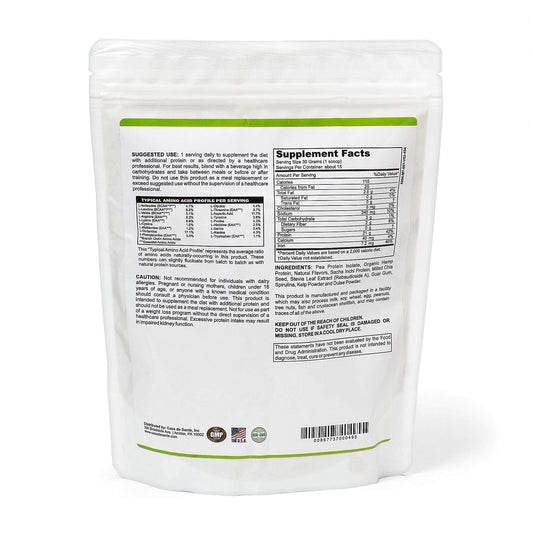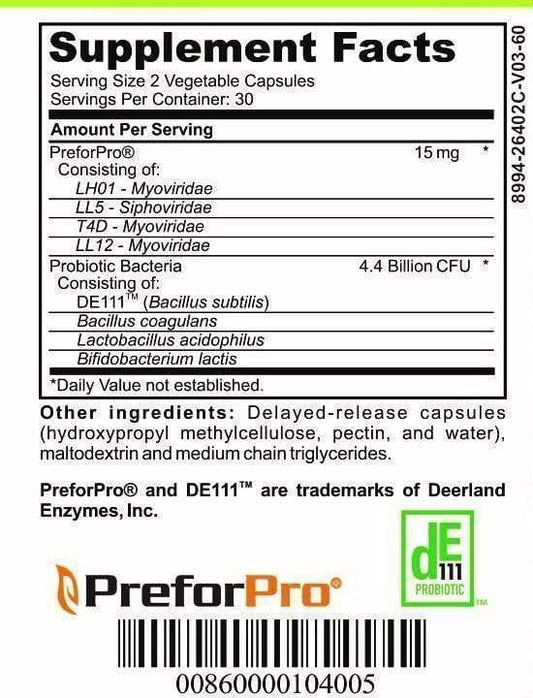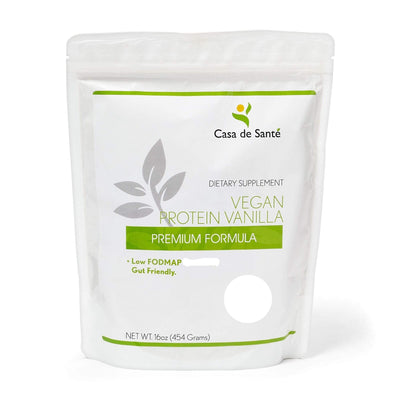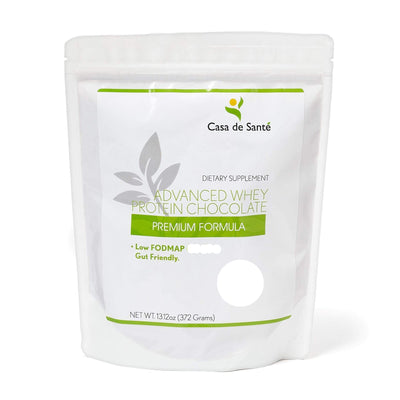Micronutrients + Gut Zoomer 3.0 + Wheat Zoomer by Vibrant Wellness Vs Skin Prick Test
Micronutrients + Gut Zoomer 3.0 + Wheat Zoomer by Vibrant Wellness Vs Skin Prick Test
In the realm of health and wellness, the importance of understanding our body's needs cannot be overstated. With the advancements in technology, various testing methods have emerged to help us gain better insights into our overall health and well-being. Two such methods, Micronutrients and Gut Zoomer 3.0, Wheat Zoomer by Vibrant Wellness, and Skin Prick Test, have garnered attention for their ability to assess specific aspects of our health. In this article, we delve into the intricacies of these tests, their scientific foundations, and the pros and cons associated with each.
Understanding the Basics: Micronutrients, Gut Zoomer 3.0, Wheat Zoomer, and Skin Prick Test
Before we dive into the details, let's explore the fundamentals of Micronutrients, Gut Zoomer 3.0, Wheat Zoomer, and Skin Prick Test.
When it comes to maintaining good health, it's not just about the macronutrients like carbohydrates, proteins, and fats. Micronutrients also play a crucial role in keeping our bodies functioning optimally. These are essential vitamins and minerals that our bodies require in small quantities. They are involved in various bodily processes, including growth, energy production, and immune function. Without an adequate amount of micronutrients, our bodies may experience nutrient deficiencies that can lead to a range of health issues.
Now, let's take a closer look at each of these topics.
What are Micronutrients?
Micronutrients are essential vitamins and minerals that our bodies require in small quantities to function optimally. They play a crucial role in various bodily processes, including growth, energy production, and immune function. Obtaining an adequate amount of micronutrients is vital for maintaining good health and preventing nutrient deficiencies.
There are several types of micronutrients, including:
- Vitamins: These organic compounds are necessary for various biological functions. They can be classified into two categories: fat-soluble vitamins (such as vitamins A, D, E, and K) and water-soluble vitamins (such as vitamin C and the B-vitamins).
- Minerals: These inorganic substances are essential for the proper functioning of our bodies. Examples of minerals include calcium, iron, zinc, magnesium, and potassium.
While micronutrients are required in small amounts, their absence or deficiency can have significant impacts on our health. For example, vitamin C deficiency can lead to scurvy, a disease characterized by fatigue, bleeding gums, and joint pain. Similarly, iron deficiency can cause anemia, resulting in fatigue, weakness, and shortness of breath.
An Overview of Gut Zoomer 3.0
Gut Zoomer 3.0 is a comprehensive test designed to assess the health of our gut microbiome. Our gut houses trillions of bacteria that contribute to digestion, metabolism, and immune function. These bacteria, collectively known as the gut microbiota, play a crucial role in maintaining our overall well-being.
Gut Zoomer 3.0 provides valuable insights into the balance and diversity of these microbes. By analyzing the DNA of the bacteria present in our gut, this test can identify potential imbalances and abnormalities that may be affecting our health. It can help detect the presence of harmful bacteria, assess the overall health of our gut, and provide recommendations for improving gut function.
Some of the key benefits of Gut Zoomer 3.0 include:
- Identifying potential gut dysfunctions
- Assessing the risk of developing certain diseases
- Guiding personalized dietary and lifestyle interventions
- Optimizing digestion and nutrient absorption
- Supporting immune system function
The Role of Wheat Zoomer in Health
Wheat Zoomer is a test specifically targeting individuals who suspect they may have a sensitivity to wheat or gluten. Gluten is a protein found in wheat and other grains, and some individuals may experience adverse reactions when consuming it. These reactions can range from mild discomfort to severe symptoms.
Wheat Zoomer is a comprehensive test that detects various markers associated with wheat-related disorders, including celiac disease and non-celiac gluten sensitivity. It provides a detailed analysis of the immune response to wheat proteins, helping to identify potential issues related to wheat consumption.
By uncovering potential issues related to wheat consumption, individuals can make informed dietary choices and potentially alleviate symptoms. This test can be particularly beneficial for those experiencing unexplained digestive problems, skin issues, or other symptoms that may be related to gluten sensitivity.
The Traditional Skin Prick Test: What it is and How it Works
The traditional Skin Prick Test is a widely used method for diagnosing allergies. It is a simple and non-invasive procedure that helps identify specific substances that trigger allergic responses in individuals.
The test involves applying small amounts of common allergens, such as pollen, pet dander, or certain foods, to the skin. The skin is then gently pricked or scratched to allow the allergens to come into contact with the immune cells present in the skin. If an individual is allergic to a particular substance, they may develop a localized allergic reaction at the site of the skin prick.
The skin reaction is typically characterized by redness, swelling, and itching. The size of the reaction can indicate the severity of the allergy. This information helps healthcare professionals determine the specific allergens to which an individual is sensitized, allowing them to develop an appropriate treatment plan.
The Skin Prick Test is a valuable tool for managing allergies. By identifying the allergens that trigger allergic responses, individuals can take steps to avoid exposure and manage their symptoms effectively. In some cases, immunotherapy may be recommended to desensitize the immune system to specific allergens.
It's important to note that while skin prick testing is generally safe, it should be performed under the supervision of a healthcare professional who can interpret the results accurately and provide appropriate guidance.
The Science Behind Micronutrients and Gut Health
Now that we have a basic understanding of these tests, let's explore the scientific foundations behind Micronutrients, Gut Zoomer 3.0, Wheat Zoomer, and Skin Prick Test.
The Importance of Micronutrients for Gut Health
Gut health is closely linked to our overall well-being, and micronutrients play a vital role in maintaining a healthy gut environment. The gut, also known as the gastrointestinal tract, is a complex system responsible for digesting and absorbing nutrients from the food we eat. It is lined with a protective barrier that prevents harmful substances from entering the bloodstream while allowing essential nutrients to be absorbed.
Certain micronutrients contribute to gut barrier integrity, immune function, and the balance of gut bacteria. For example, vitamin A is essential for the maintenance of the gut barrier, preventing the leakage of harmful substances into the body. Vitamin D plays a role in modulating the immune system, helping to regulate the body's response to pathogens in the gut. Zinc is necessary for the growth and development of gut bacteria, promoting a diverse and healthy microbiome.
Deficiencies in these essential elements can impact gut health, leading to a range of gastrointestinal issues. For instance, a lack of vitamin A can weaken the gut barrier, increasing the risk of inflammation and infection. Insufficient vitamin D levels may result in an overactive immune response, leading to autoimmune conditions such as inflammatory bowel disease. Imbalances in gut bacteria caused by a zinc deficiency can disrupt the delicate ecosystem of the microbiome, potentially leading to digestive problems.
How Gut Zoomer 3.0 Measures Gut Health
Gut Zoomer 3.0 utilizes advanced genomic technology to analyze the genetic material present in a stool sample. This analysis helps identify the types and quantities of bacteria present in the gut, providing insights into the overall balance of gut microbes. The human gut microbiome consists of trillions of microorganisms, including bacteria, viruses, fungi, and other microbes. These microorganisms have a profound impact on our health, influencing digestion, metabolism, immune function, and even mental well-being.
By comparing the results to known healthy profiles, Gut Zoomer 3.0 determines potential imbalances and identifies specific organisms that may contribute to gut-related issues. This information can guide healthcare professionals in developing personalized treatment plans to restore gut health. Understanding the composition of the gut microbiome can help identify potential triggers for digestive disorders, such as irritable bowel syndrome or small intestinal bacterial overgrowth.
The Connection between Wheat and Gut Health
For individuals with sensitivities to wheat or gluten, the consumption of these substances can have a significant impact on gut health. Wheat-related disorders, such as celiac disease and non-celiac gluten sensitivity, can cause inflammation and damage to the intestinal lining. Celiac disease is an autoimmune disorder triggered by the ingestion of gluten, a protein found in wheat, barley, and rye. Non-celiac gluten sensitivity refers to a condition where individuals experience symptoms similar to those of celiac disease but without the characteristic intestinal damage.
When individuals with celiac disease or non-celiac gluten sensitivity consume wheat or gluten, their immune system reacts to the proteins, triggering an inflammatory response. This inflammation damages the lining of the small intestine, leading to symptoms such as abdominal pain, diarrhea, bloating, and nutrient malabsorption. Over time, if left untreated, this damage can result in long-term complications, including nutrient deficiencies, osteoporosis, and an increased risk of certain cancers.
Identifying and avoiding wheat can help alleviate symptoms and promote a healthier gut environment. This can be achieved through various diagnostic tests, such as the Wheat Zoomer, which detects specific antibodies and markers associated with wheat-related disorders. By eliminating wheat from the diet, individuals with sensitivities can reduce inflammation, allow the gut lining to heal, and improve overall gut health.
Comparing Vibrant Wellness Tests and Skin Prick Test
Now that we understand the scientific foundations, let's dive into the methodologies and differences between Vibrant Wellness Tests and the Skin Prick Test.
The Methodology of Vibrant Wellness Tests
Vibrant Wellness Tests, including Micronutrients, Gut Zoomer 3.0, and Wheat Zoomer, utilize cutting-edge laboratory techniques to provide comprehensive insights into specific aspects of our health. These tests analyze various biological samples, such as blood, stool, and genetic material, to examine specific markers associated with certain health conditions or imbalances.
The Procedure of a Skin Prick Test
A Skin Prick Test involves the application of small amounts of potential allergens to the skin, usually the forearm or back. The skin is then pricked with a small needle, allowing the allergen to enter the body. Any subsequent allergic reactions, such as redness, swelling, or itchiness, indicate a response to the allergen.
Accuracy and Reliability: Vibrant Wellness Tests Vs Skin Prick Test
Both Vibrant Wellness Tests and Skin Prick Test are valuable diagnostic tools; however, they differ in their applications and accuracy. Vibrant Wellness Tests provide comprehensive insights into specific aspects of our health, while the Skin Prick Test primarily focuses on identifying allergens that trigger allergic responses. The accuracy and reliability of these tests can vary depending on various factors, including the individual's medical history and the expertise of the healthcare professional administering the tests.
Pros and Cons of Each Testing Method
Now, let's weigh the pros and cons associated with using Vibrant Wellness Tests or the Skin Prick Test for diagnostic purposes.
The Benefits of Using Vibrant Wellness Tests
Vibrant Wellness Tests offer a comprehensive approach to health assessment, providing in-depth insights into specific aspects of our health. These tests can help identify underlying issues or imbalances that may not be apparent through conventional diagnostic methods. They offer a non-invasive way to gather vital information about our bodies, enabling us to make informed decisions regarding our health and well-being.
The Limitations of Vibrant Wellness Tests
Despite their numerous benefits, Vibrant Wellness Tests do have limitations. These tests may not be suitable for everyone and should be interpreted in conjunction with a healthcare professional's expertise. Additionally, there may be a cost associated with these tests, making them less accessible to certain individuals.
The Advantages of Skin Prick Test
The Skin Prick Test is a well-established and widely used method for diagnosing allergies. It provides immediate results and can help individuals determine specific allergens that trigger their symptoms. This allows for targeted avoidance strategies and personalized management of allergic conditions.
The Drawbacks of Skin Prick Test
While the Skin Prick Test is effective for identifying allergens, it does have limitations. This test focuses solely on allergic responses and may not capture other underlying health issues. Additionally, false positives and false negatives can occur, requiring further testing or interpretation by a healthcare professional.
In conclusion, Micronutrients, Gut Zoomer 3.0, Wheat Zoomer by Vibrant Wellness, and Skin Prick Test are valuable tools for understanding our individual health needs. Each test offers unique insights into specific aspects of our health, enabling us to make informed decisions regarding our well-being. However, it is essential to utilize these tests in conjunction with the expertise of healthcare professionals and consider individual circumstances to ensure accurate interpretation and personalized care.




























